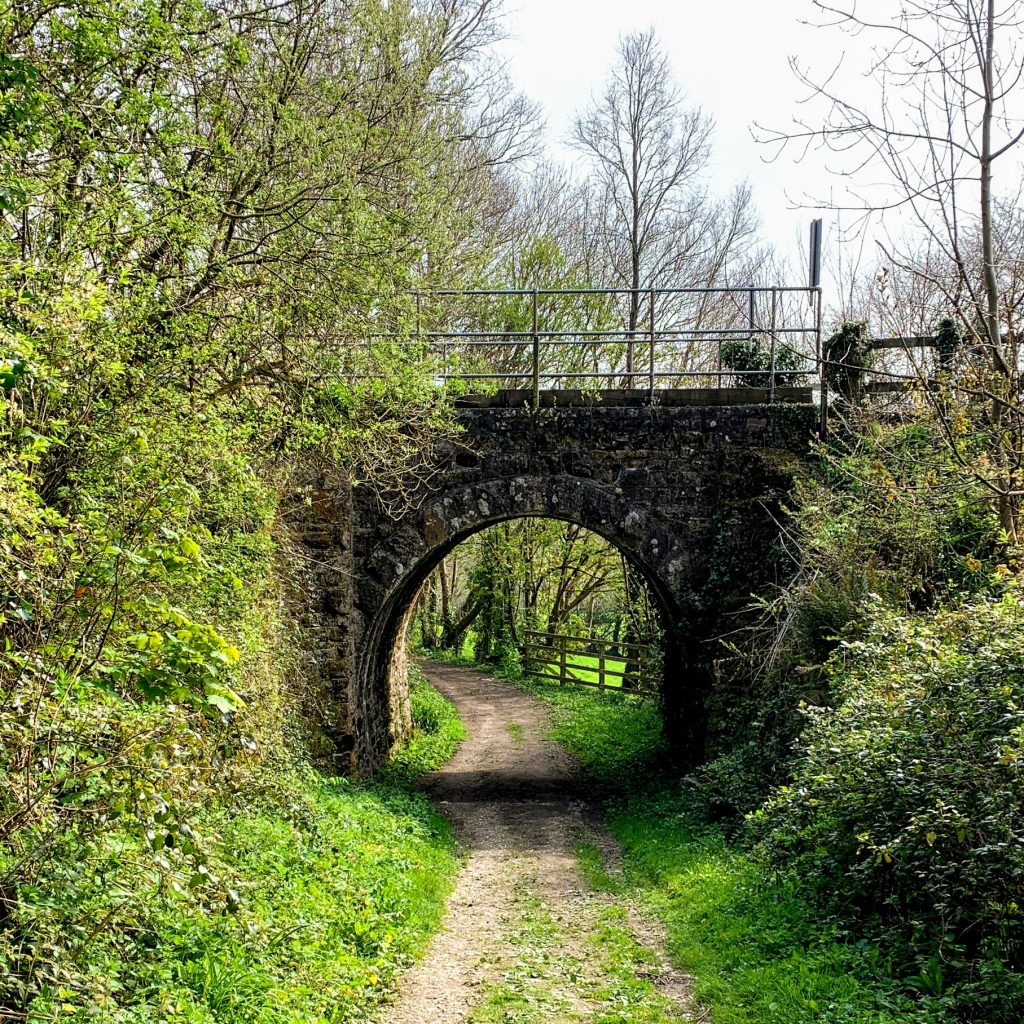I’ve had this one planned for quite a while, and a weekend away in Falmouth provided the opportuntity to get boots on the ground. It was also another occasion when I was walking with company – one of my oldest friends David. The weather looked good, but we hadn’t bargained for the strength of the wind! The start of this walk was quite exposed. If you follow in our footsteps, wrap up warmer than we did!

We caught the train from Falmouth Docks, changing at Truro and heading south west to Redruth. The Penzance train was about 40 minutes late at Truro, but we were in no rush so for us this was just a minor irritation. We grabbed a coffee in the heated waiting room.

Once at Redruth, we headed out of the town via Sea View Terrace. It seemed unlikely that the the sea really could be viewed. However, as we climbed up the hill we were proved wrong. Although the weather today was not going allow us to actually see the sea, the radome covering the air defence radar at RRH Portreath was clearly visible.

Our first planned destination was Gwennap Pit. This is a grass covered amphitheatre where John Wesley preached eighteen times between 1762 and 1789. The present form came about after his death, when locals remodelled it as a memorial. Originally, it seems to have been a hollow caused by subsidence from mining activities, and presumably appeared less regular than it did now. It was larger originally too. Wesley himself claimed to have preached to 22,000 people there. Pevsner is sceptical of this, saying he “either mis-remembered or exaggerated”, but I am not so sure. Certainly there is no way that that many people could fit in the pit itself, but as this report from The Graphic on 17 June 1876 points out, there is room for large numbers in the surrounding area and large crowds still gathered even then:
But whatever Gwennap Pit was, it is now an insignificant hollow in a hill side; “looks nothing in itself, sir when it’s empty you might easily pass by and not notice it,” said a man of whom we asked our road. And he was right so that any one who expects to find the chasm, like the crater of a huge volcano, in which the engraving, so popular in West Cornwall, represents Wesley, perched on a jutting rock, preaching to assembled thousands, will be sadly disappointed. So far from being a grand chasm, “the Pit” makes no break in the unmitigated ugliness of the Redruth neighbourhood. The print, like many other prints of the kind, is untrue in every point, except in the matter of the assembled thousands. These may be seen every Whit-Monday– a great day everywhere among the Cornish Methodists. Crowded trains run at single fare, hundreds tramp in afoot, every sort of conveyance brings its quota, and, by the afternoon, when the services’ begin, there are sometimes 20,000 people gathered in and about the Pit.”
The Graphic – 17 June 1876

From Gwennap Pit, we descended into Carharrack. The view from the path above Carharrack is terrific, if (like me) you enjoy a slightly industrial landscape. The pub in Carharrack was not open, and indeed has slightly restrictive (and unusual!) opening hours scrawled on the blackboard outside – “Monday – Closed all day, Tuesday – closed, Wednesday Thursday – Closed all day, Friday Saturday Sunday, 7pm to 12:00.” I guess they know they their local market! According to the sign outside, this was “Cap’n Blood’s Tavern”. He must have been away during the week.

We then walked through Outer Wood, accompanied by increasingly severe warnings not to stray off the path. Danger of Death was enough to keep us firmly out of the trees. The dangers arise from the old mine workings of Wheal Squire, part of United Mines, which produced 20,000 tons of copper from 1816-1853. Some of my ancestors were copper miners at the time in this general area, so it is fascinating to imagine what the world was like for them. I suppose there were fewer health and safety warnings…

From here, the route was across the fields to Frogpool. I went to Frogpool just once as a child, and for some reason all I can remember is that it seemed very white! It still does – the buildings seem almost universally to be painted white. We were pleased to arrive at the (white) pub before it closed, with minutes to spare, and stopped for a pint. The clientele and bar staff seemed very friendly, and the beer was good.

From here it is a short walk along roads and byways into Perranwell. The path we choose took us via Bargus and under the railway line. It also meant that we had no choice but to go past the pub, and since it was open it would clearly have been rude not to. This was another fine pub, with good beer and an exceptionally tasty looking menu. One for another day.

From the pub to the station is only a few minutes, but we misread the timetable and the last few hundred metres were more of a rush then expected. In the end though our timing was perfect and we were soon back in Falmouth planning some more beers for the evening.
Distance: 8.2 miles









